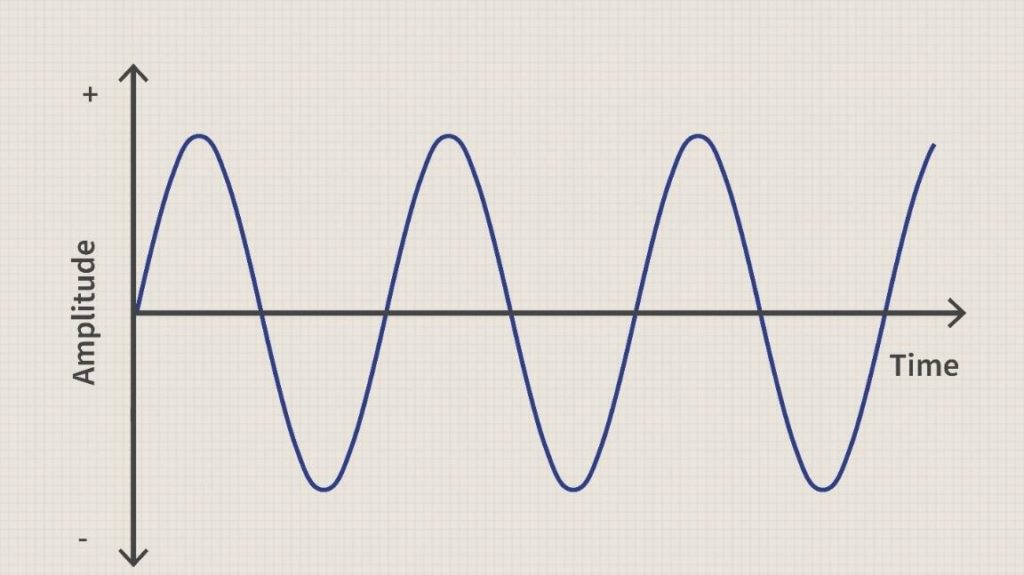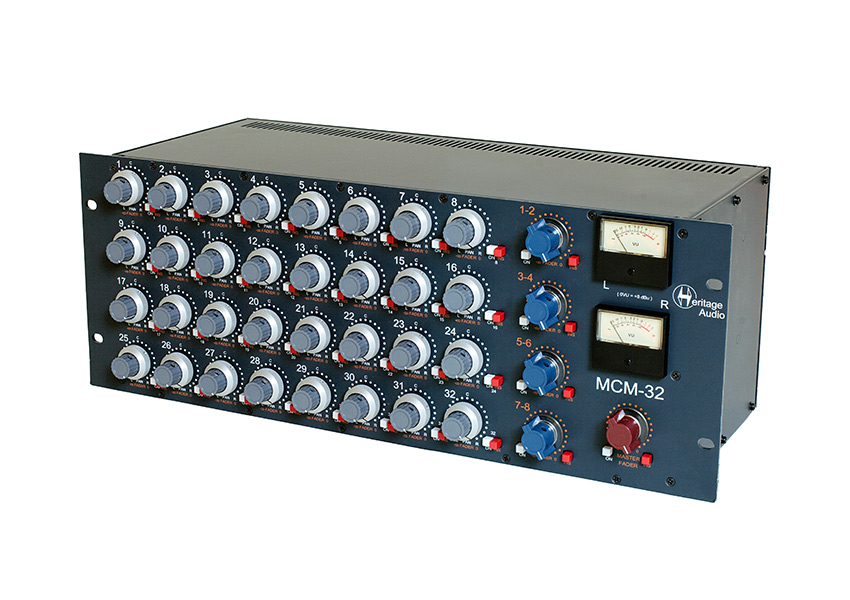+ Learn how to break out of repetitive loops and add emotionality and vulnerability to your tracks with Jlin in Rhythm, Variation, & Vulnerability.
This one isn’t too hard.
Audio summing is simply the mixing of two audio signals together to create a combined signal. You could do this with a y-cable, a mixer, or digitally inside a DAW. In other words, audio summing just means mixing.
End of article! Yay!
Actually, let’s go a little further. When musicians and engineers say audio summing these days, what they often mean is analog summing — a fairly recent buzzword. We’ll talk about that and go a little deeper with audio summing in general here.
Combining Sounds
First things first. It’s helpful to envision what summing means from a sound wave standpoint. Let’s take a sine wave to start:

If you were to combine that sine wave with another wave you would get a new, more complex wave:

Technically, all sound is just various types of sine waves super-imposed on each other. Although a visual representation of music looks super complex, it’s actually just one big, crazy wave:

Audio summing is the making of that crazy wave.
+ Read more on Flypaper: “What NOT to Do When Mixing Your Own Music.”
Analog vs. Digital Summing
Analog devices such as a mixing board use a different process to sum audio than software such as a DAW (obviously).
An analog mixer sums signal by sending multiple electrical signal sources (e.g: faders on a console) to a common bus which usually feeds another gain stage. These electrical components need to make sure the multiple signals are all in phase and lack distortion. Each component in the analog summing process can affect the sound quality of the summed signal. This all happens in the analog domain – it’s all electrical signal we’re talking about.
Digital summing mixes signals together very differently.
In a DAW or other digital summing device, summing is math. It’s simple really. For each sample, the numerical values of the various sources are added together, resulting in a new number representing a new sample point. Each of those samples represents an amplitude and if you graph out the resulting wave…voila, music! Or avant garde poetry, or whatever.
Analog Summing: The Hip New Thing (Kinda)
We mentioned that sometimes when people talk about audio summing, they’re actually talking about analog summing. Put simply, analog summing is the process of using analog hardware to mix down digital mixes, in order to gain the desirable coloring that analog hardware can add to summed audio.
Earlier we mentioned that in the analog domain, each physical component involved can affect how signals are summed. Typically, this comes in the form of some kind of distortion or intermodulation. In other words, the signal is not summed together perfectly as it is in a DAW. As you’re probably aware, given the right hardware, this can be quite desirable.
Modern analog summing devices bring back the desirable qualities of the old analog consoles, since we all discovered very rapidly that digital audio could be a little cold and lifeless.
You can do some analog summing in a couple of ways. One, you can actually use an analog console. This would require you to have an audio interface for your computer that has multiple analog outputs (8, 16, 24, 48 — whatever you want to do). Believe it or not, some big studios still do it this way. In fact, some studios record on 24-track analog tape, transfer to a DAW for editing and then mix using classic analog consoles, using the DAW as a simple playback device.
You can also pick up an analog summing box such as the Dangerous Audio D-Box+, the Neve 5059 Satellite Summing Mixer, or the Heritage Audio MCM-32 Summing Mixer (shown below).

These boxes don’t do everything a console does (like have faders and EQs and automation and take up lots of space and cost $800k). Some don’t even have level adjustments. They’re just for taking your already mixed outputs from your DAW and summing them in the analog domain. Yet, engineers swear by these boxes.
If that’s too rich for your bones (after all you still have to have a multiple output interface), a third option that isn’t actually analog summing is to use digital emulation to do the job of spicing up your mix.
In fact, emulation of analog characteristics is the hot market in plugin and DAW technology now. Products like Slate Digital’s Virtual Analog Bundle or IK Multimedia’s T-Racks Tape Machines do a pretty good job of this. Harrison Consoles even makes a DAW (Harrison MixBus) which emulates their classic consoles so well that many producers and mixers opt to use it as a summing mixer instead of an actual analog summing box.
Hopefully That’s Summed It All Up
In essence, summing is just another word for mixing, but hopefully you’ve got an even better understanding of what that is now, and if nothing else, feel inspired to go and sum some cool stuff together. In the meantime, that about sums it up – pun fully intended.
Don’t stop here!
Continue learning with hundreds of lessons on songwriting, mixing, recording and production, composing, beat making, and more on Soundfly, with artist-led courses by Kimbra, Jlin, Kiefer, RJD2, Ryan Lott, and of course, Com Truise: Mid-Fi Synthwave Slow-Motion Funk.





